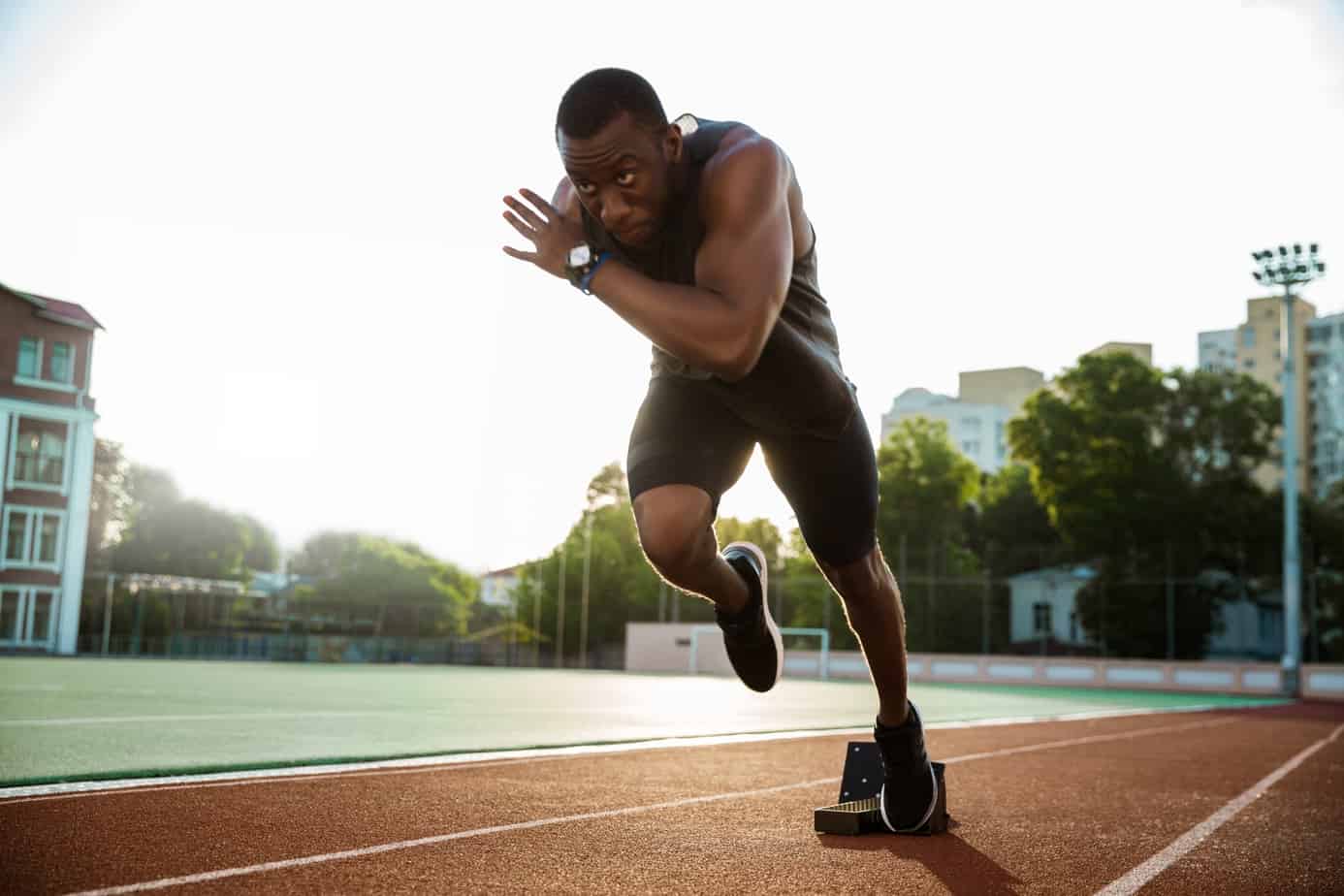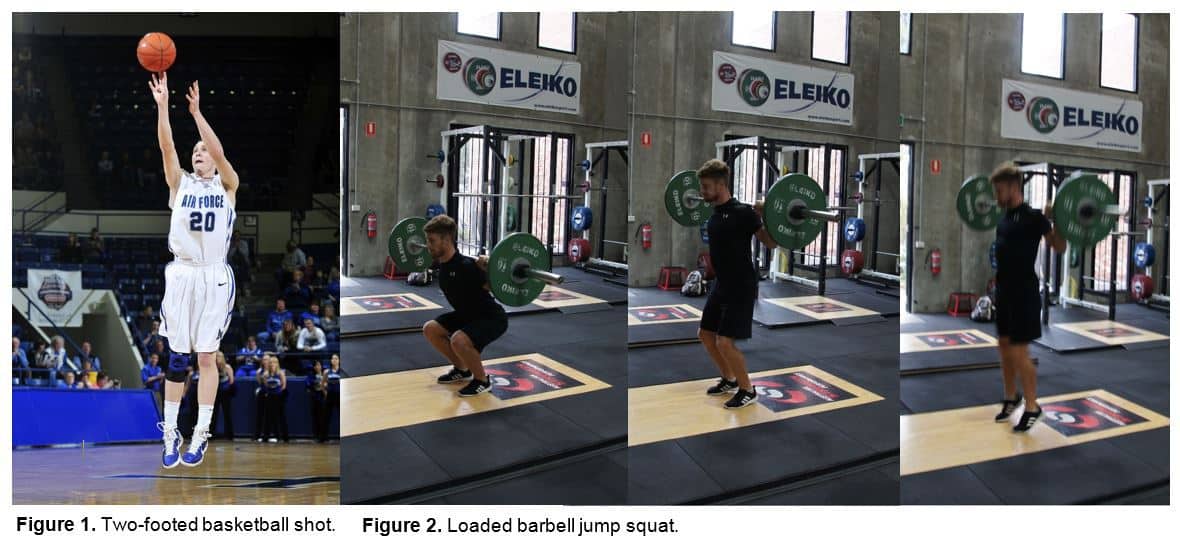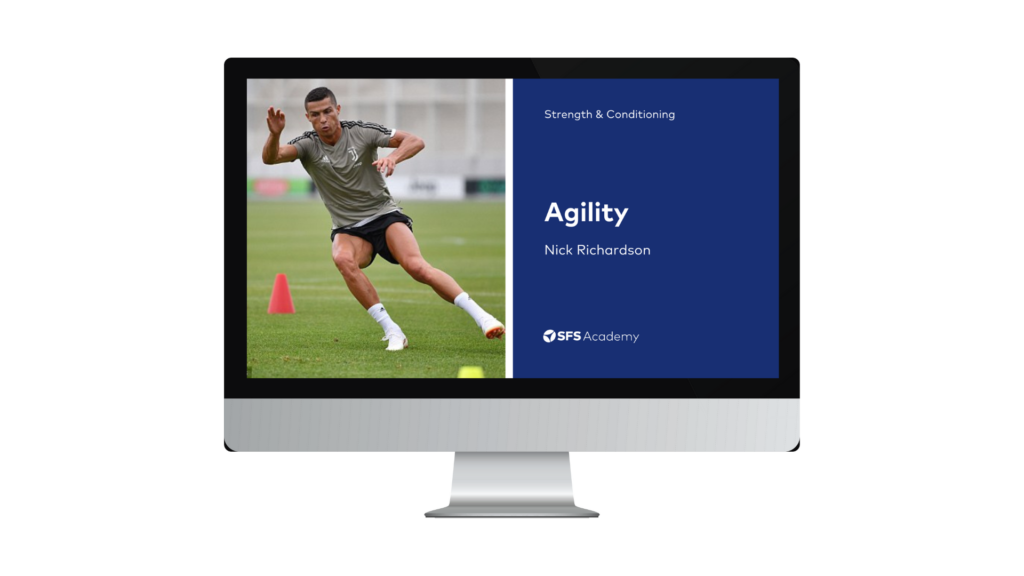Contents of Article
- Summary
- What is dynamic correspondence?
- Is there a link between training specificity and dynamic correspondence?
- How does training prescription impact dynamic correspondence?
- Are there any issues with dynamic correspondence?
- Is more research into dynamic correspondence needed?
- How should dynamic correspondence be applied?
- Conclusion
- References
- About the Author
Summary
Dynamic correspondence can simply be described as the ‘transfer effect’, or ‘transferability’ of training. Several fundamental factors (i.e. physiological, biomechanical, and psychological) must be considered during training prescription in order to maximise the dynamic correspondence. Though these seemingly simple factors give birth to an exhaustive list of other variables such as the rate of force development (RFD), impulse, and rate of oxygen consumption (VO2) intensities.
Though it is well-understood that strength and conditioning programmes can improve athletic performance, there is uncertainty in their ability to improve actual sporting performance due to the number of uncontrollable test variables.

What is dynamic correspondence?
The term ’dynamic correspondence’ was first introduced by Professor Yuri Verskoshansky in 1993 in his book ‘Supertraining’ (1). Dynamic correspondence is a generic term which refers to an exercise or training programme’s ability to directly affect the athlete’s sporting performance. This can also be simply described as the ‘transfer effect’, or ‘transferability’ of training.
For example, if a 100m sprinter made a 0.5-second improvement in their competition time purely as a result of their strength and conditioning programme, then the programme would be said to have had a large dynamic correspondence with the athlete’s sports performance – as a 0.5-second improvement could be suggested as a great improvement in the 100m. However, what evidence is there to suggest that this 0.5-second improvement was purely a result of the training programme? Was it not due to improvements in technique, diet, lifestyle, sleep, illegal substances, or even a combination of them all?
The amount of uncontrollable variables such as those just mentioned means there is, and perhaps always will be, uncertainty in the effectiveness of a physical training programme to improve performance. This emphasises the issue with the dynamic correspondence – i.e. there is often no way of identifying the true effect of the training programme on sports performance. With that said, huge amounts of research have proven physical training programmes can improve athletic performance (2, 3, 4, 5, 6). In addition, researchers also use the ‘effect size’ statistic to determine how much of an improvement that particular training intervention (e.g. plyometrics) had on athletic performance (7).
However, whilst we can determine the effect, and the magnitude of the effect that a particular training protocol (e.g. resistance or plyometric training) has upon athletic performance in strict testing environments, it is unclear whether there is a dynamic correspondence to actual sporting performance. For example, whilst it is understood that plyometric training can improve kicking performance in football (8, 9, 10, 11), there is no evidence to suggest it can improve kicking performance during competition when the athlete is in a chaotic, high-pressure environment.
Is there a link between training specificity and dynamic correspondence?
Dynamic correspondence has a synonymous connection with training specificity, which may be better explained by the Specific Adaptation to Imposed Demands (SAID) principle, whereby if the training goal was to improve for example upper body strength, then the bench press would be more favourable to do so than a leg extension.
Consequently, training specificity refers to using training methods which imitate the movements and/or the physical demands performed in the sport but do not directly replicate the sport itself. If the movements associated with the sport were simply replicated, then instead of using exercise-based training to improve performance, the athletes would just play more of their sport. Therefore to achieve training specificity, the prescribed training exercises must replicate the demands of the sport in several ways:
- Physiological
- Biomechanical
- Psychological
A simple example of training specificity would be to use a barbell jump squat to improve the two-footed vertical jump observed in basketball – as there is an obvious similarity between the extension of the hip, knee and ankle joints, otherwise known as the ‘triple extension’ (Figures 1 and 2).
Another clear example would be a triple jumper performing single-leg bounds as part of their strength and conditioning programme, as there is a clear similarity between the two movements (Video 1).
In both of these examples, there are obvious similarities between the exercises and the movements associated with the sport. This movement similarity – namely the triple extension* – partially explains the fascination with using Olympic Weightlifting exercises as a method to improve athletic performance. Amongst this, there are also numerous other reasons why strength and conditioning coaches include Olympic Weightlifting in their training programmes.
*The triple extension refers to the explosive action produced by the simultaneous extension of the hips, knees, and ankles. This bilateral or unilateral extension movement is extremely common in sports (e.g. sports involving any sprinting and jumping).
It is commonly agreed amongst exercise professionals that in order to maximise the dynamic correspondence of training, more variables other than just movement similarity must be considered. This suggests an exercise which simply looks like a sporting movement may not be enough to impose significant improvement on performance. For example, whilst barbell squat jumps may look like many jumps seen in various sports (e.g. basketball two-footed jump), they may not be the best exercise to improve the athlete’s jumping ability.
In the book Supertraining (1), the authors Verskoshansky and Siff (2009) discuss some other essential factors that must be considered when attempting to maximise the dynamic correspondence of an exercise. These additional factors include:
- The amplitude/direction of the movement
- The accentuated region of force production
- The dynamics of effort
- The rate and time of maximum force production
- The regime of muscular work
However, whilst these factors still remain valid, it may be suggested that even more should be considered – including:
Movement similarities (examples):
- Jumping (single-leg and/ or double-leg)
- Twisting
- Throwing
- Pushing
- Pulling
Kinetic similarities (examples):
- Vertical and horizontal force application
- Rate of force development (concentric and eccentric)
- Time to peak force
- Rate of loading
- Power output (peak and average)
- Impulse
- Ground contact times
- Movement/contraction velocity
Neurophysiological similarities (examples):
- Heart rate (peak and average)
- VO2 intensities
- Metabolic power outputs (peak and average)
- Blood lactate concentrations
- Rate coding
- Motor-unit recruitment
This exhaustive list demonstrates numerous variables that may be considered when a strength and conditioning coach prescribes an athlete with a particular exercise in order to optimise the dynamic correspondence of their training programme. Hence just one of the reasons why training programmes are, or at least should be, highly individualised.
How does training prescription impact dynamic correspondence?
There are clearly a large number of scientific reasons why a strength and conditioning coach may select a particular exercise or drill, but understanding which ones are most important for the intended training goal is the so-called ‘art’ of the training programme. As an example, the scientific reason plyometric bounds may be included in a triple jumper’s training programme may be for their movement, ground contact time, and impulse similarities to the sport itself. However, whilst this may be highly sport-specific, the athlete’s current training goal may be maximum strength/ maximum force production; thus they may be in a ‘general preparatory phase’ of their training programme.
During the general preparatory phase, the prescribed exercises may be less specific to the sport, this enables the athlete to develop a ‘physical base’, or ‘foundation of strength’ which can be built upon later in the training programme. In the latter stages of the training programme, during the ‘special preparatory phase’ or ‘competition phase’, exercises may be more specific to the sport itself in an attempt to maximise sport-specific skills.
This manipulation of training specificity during an athlete’s training programme is a vital component for maximising athletic development and is often regarded as the ‘art’ of training prescription.
Are there any issues with dynamic correspondence?
Like everything in life and particularly athletic development, there are some issues with the theory surrounding dynamic correspondence. Firstly, whilst there appears to be great logic behind the use of certain exercises, techniques, and training methods, there is an argument to suggest the use of physical development to improve ‘sport’ performance does not exist. This is purely due to the large number of uncontrollable variables the athlete(s) are exposed to during competition.
For a somewhat exaggerated example, imagine a 9.98-second 100m sprinter who has never competed in the Olympics, nor completed a strength training programme but is about to over the coming months. They complete the training programme, compete in the games, and achieve a time of 9.21 seconds – a new world record. Was that the result of the training programme, the atmosphere, their breakfast, or perhaps even their new trainers? The point being made is there are numerous interfering factors which may have contributed to the athlete’s new world record, so the dynamic correspondence of the training programme is not fully understood.
What is important to understand, is that whilst actual ‘sport’ performance is hard to measure, countless quantities of research have demonstrated that physical training programmes can improve ‘athletic’ performance in test-based environments (2, 3, 4, 5, 6). Given this information, assumptions can be made that well-designed strength and conditioning programmes can improve ‘sports’ performance.
Secondly, the current lack of knowledge regarding the biomechanics of sporting movements, for example, the typical peak forces, rate of force developments, impulses, and power outputs of the take-off during the long jump means there are limitations with the specificity of training prescription. In simpler terms, we do not fully understand the biomechanics of particular sporting movements (e.g. hammer throw) in order to improve them as much as we may be able to.
Is more research into dynamic correspondence needed?
Given the current uncertainties with the true transferability of training programmes on sports performance, future research should explore the following topics:
- Better understanding of training programmes’ impact on ‘sport’ performance (i.e. the dynamic correspondence).
- More extensive exploration of the biomechanics of sporting movements (e.g. hammer throw, long jump take-off, javelin throw, rugby scrum, football goal-kick).
- The impact of certain training modes and exercises on athletic performance (e.g. ‘effects of Olympic Weightlifting on sprint performance’, or ‘the deadlift‘s ability to improve the force development rate during the long jump take-off’).
How should dynamic correspondence be applied?
When designing a training programme for an athlete it is essential that the coach fully understands the biomechanics and demands of the sport, as this is vital material to maximise training specificity and the potential dynamic correspondence. For example, if the ground contact time of the foot during a sprint is 80 milliseconds, what exercises/drills is the strength and conditioning coach going to use in order to improve the athlete’s performance?
Additionally, the phases of training must also be considered, if the athlete is to peak during competition phases. These are just two factors that must be considered when working with athletes to improve their chances of sporting success.
Conclusion
Dynamic correspondence is the ‘training effect’ the physical training programme has had on the athlete’s sports performance. However, due to the large quantities of uncontrollable variables during competition, measuring the dynamic correspondence is extremely difficult, thus the true effects remain elusive.
With that being said, there is sufficient evidence from research to suggest physical training programmes do positively enhance sporting performance. With the continual improvements in professional sporting performance, such as the 100m (12) and the high-jump (13), it may be suggested that the ‘art’ of training prescription continues to grow. Having said this, sporting success in events such as the Olympic Snatch have begun to stagnate over the past 10 years (14). This identifies the need for future research to determine the intricate biomechanical characteristics of many sporting movements in order to enhance our understanding of sports performance and make continuous progress.
- Verkhoshansky, Y. (2009). Supertraining [Paperback]. First Edition. Verkhoshansky.
- Chaouachi, A., Hammami, R., Kaabi, S., Chamari, K., Drinkwater, E.J. & Behm, D.G. (2014). The combination of plyometric and balance training improves sprint and shuttle run performances more often than plyometric-only training with children. Journal of Strength and Conditioning Research, 28(2), 401–412. [PubMed]
- Chaouachi, A., Hammami, R., Kaabi, S., Chamari, K., Drinkwater, E.J. & Behm, D.G. (2014). Olympic weightlifting and plyometric training with children provides similar or greater performance improvements than traditional resistance training. Journal of Strength and Conditioning Research, 28(6), 1483–1496. [PubMed]
- Ozbar, N., Ates, S. & Agopyan, A. (2014). The effect of 8-week plyometric training on leg power, jump and sprint performance in female soccer players. Journal of Strength and Conditioning Research, 28(10), 2888– 2894. [PubMed]
- Lake, JP and Lauder, MA. Kettlebell swing training improves maximal and explosive strength. J Strength Cond Res 26(8): 2228–2233, 2012 [PubMed]
- Ronnestad, B.R., Hansen, J., Hollan, I., & Ellesfen, S. (2015). Strength training improves performance and pedalling characteristics in elite cyclists. Scandanvian Journal of Science and Medicine in Sport, 25, pp. 89-98. [PubMed]
- Flanagan, E.P. (2013). The effect size statistic – applications for the strength and conditioning professional. Journal of Strength and Conditioning Research, 35(5), 37-40. [Link]
- Marques, M. C., Pereira, A., Reis, I. G., & van den Tillaar, R. (2013). Does an in-Season 6-Week Combined Sprint and Jump Training Program Improve Strength-Speed Abilities and Kicking Performance in Young Soccer Players? Journal of Human Kinetics, 39, 157–166. [PubMed]
- Rubley, M.D., Haase, A.C., Holcomb, W.R., Girouard, T.J. & Tandy, R.D. (2011). The effect of plyometric training on power and kicking distance in female adolescent soccer players. Journal of Strength and Conditioning Research, 25(1), 129–134. [PubMed]
- Ramırez-Campillo, R, Meylan, C,A lvarez, C, Henrıquez-Olguı´n, C, Martınez, C, Canas-Jamett, R, Andrade, DC, and Izquierdo, M. Effects of in-season low-volume high-intensity plyometric training on explosive actions and endurance of young soccer players. J Strength Cond Res 28(5): 1335–1342, 2014 [PubMed]
- Michailidis, Y, Fatouros, IG, Primpa, E, Michailidis, C, Avloniti, A, Chatzinikolaou, A, Barbero-A´ lvarez, JC, Tsoukas, D, Douroudos, II, Draganidis, D, Leontsini, D, Margonis, K, Berberidou, F, and Kambas, A. Plyometrics’ trainability in preadolescent soccer athletes. J Strength Cond Res 27(1): 38–49, 2013 [PubMed]
- 100 metres – Wikipedia, the free encyclopedia. 2016. 100 metres – Wikipedia, the free encyclopedia. [ONLINE] Available at: https://en.wikipedia.org/wiki/100_metres. [Accessed 25 January 2016].
- Men’s high jump world record progression – Wikipedia, the free encyclopedia. 2016. Men’s high jump world record progression – Wikipedia, the free encyclopedia. [ONLINE] Available at: https://en.wikipedia.org/wiki/Men%27s_high_jump_world_record_progression. [Accessed 25 January 2016].
- Ho, LKW, Lorenzen, C, Wilson, CJ, Saunders, JE, and Williams, MD. Reviewing current knowledge in snatch performance and technique: The need for future directions in applied research. J Strength Cond Res 28(2): 574–586, 2014 [PubMed]





